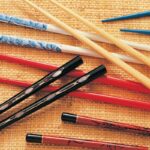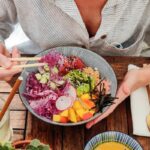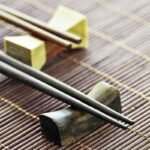We’ve all used, or tried to use chopsticks, at some point in our lives, and you may have wondered exactly how they are made. Whether you are a novice or an expert, the origin of chopsticks and the process they go through is very interesting.
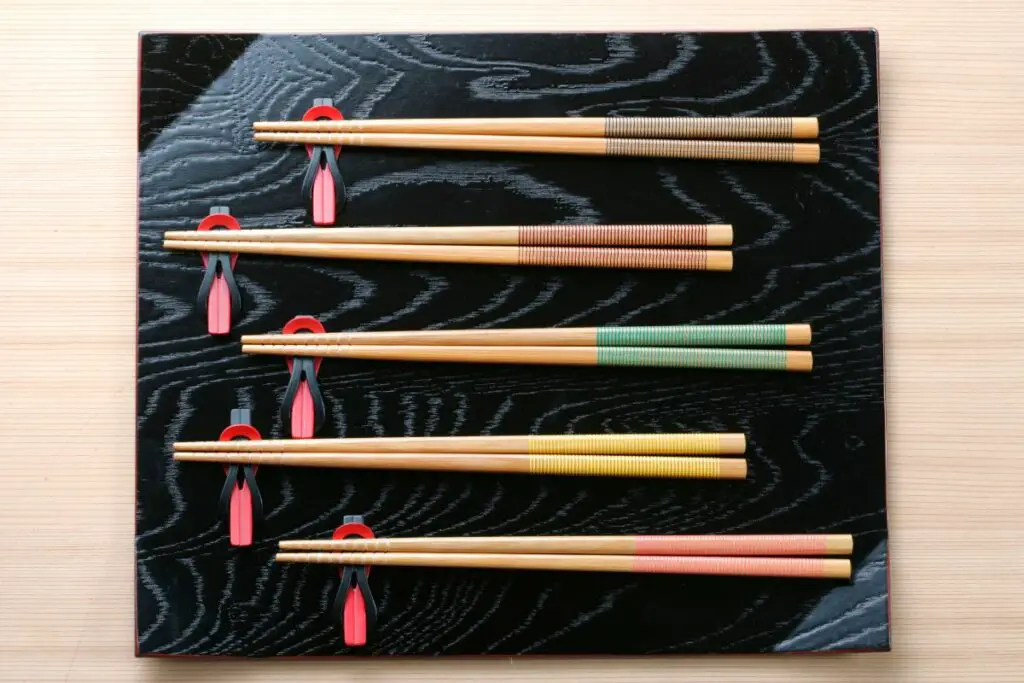
We take a look at how to make chopsticks, although we’re not promising it will make you any better at using them!
What Are Chopsticks?
Chopsticks are pairs of sticks of equal length which are used in many Asian countries as eating and cooking utensils. They’ve been in use for more than three thousand years. They are primarily used with the dominant hand and secured by the fingers.
Originating in China, chopsticks are widely used in Japan, Korea, Vietnam, Thailand and Borneo. They are also commonly used in Asian restaurants around the world.
The origin of the word chopstick is not entirely clear but probably came from the Chinese Pidgin English for either quick, as in chop-chop or for food which was chow.
In China the standard term for chopsticks is kuàizi while in Japan they are known as hashi or otemoto. The latter is commonly printed on disposable chopsticks.
Characteristics Of Chopsticks
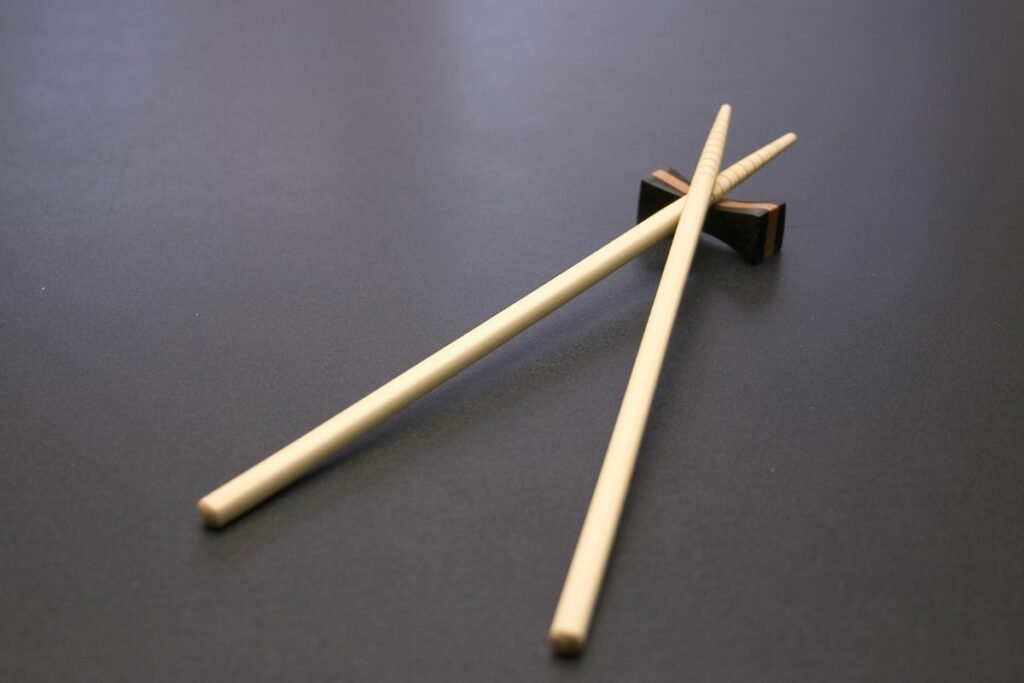
Although there are different types of chopsticks made from different materials there are some characteristics which are common to most.
Length
Apart from cooking chopsticks which are considerably longer, most chopsticks are between 9–10 inches long. Cooking chopsticks are typically 12–16 inches long.
Cross-section
The shape of the cross-section of chopsticks can be square, round, hexagonal or various polygonal cross-sections. Most are rounded so that there are no sharp edges, but Korean chopsticks have flat handles.
Taper
The taper at the end of chopsticks is to facilitate picking up food. Chinese chopsticks are normally blunt ended while Japanese and Korean chopsticks are sharper at the tip.
Tips
Some chopsticks are rougher at the tip than others to give better friction for picking up food.
Material
Chopsticks can be made from a wide variety of materials including bamboo, plastic, wood, metal, jade, bone, ivory and porcelain.
Embellishments
Bamboo and wooden chopsticks are frequently embellished with lacquer for decoration and waterproofing. Metal chopsticks are sometimes roughened to make gripping them easier.
How Are Chopsticks Made?
There are many different types of chopsticks in use around the world from disposable to highly ornate. We’ll take a look at how each is made.
Everyday Use Chopsticks
Most chopsticks are made from some variety of wood and then coated with a food safe lacquer or paint. Typically a hardwood of some kind is used and the color and grain is important for the look of the finished product.
While mass produced chopsticks are made with a fully automated process in a factory there has been a long tradition of hand made chopsticks.
Choosing The Wood
Choosing the type of wood and the correct grain are the first steps in making handcrafted chopsticks. The wood may be aged, cured or dried first, but this depends on the type of wood, its hardness and how impervious it is to water.
The block of wood is rectangular, just longer than the finished chopstick length and wide enough to produce several pairs of chopsticks.
Inlaying
Often the chopsticks are inlaid with a contrasting wood and this is the next step. A trench is cut into each piece of wood and the inlaid wood is glued in place, clamped and left to dry.
Cutting Blanks
The block of wood is then cut into long, thin rectangular pieces of wood, each of which will become the finished chopsticks.
Shaping The Chopsticks
The rectangular sticks need to now be shaped into usable chopsticks. This can either be done by hand or with a machine. If done manually the maker uses a handheld scraper and if done by machine the chopsticks are held against the belt of a sanding machine.
The finished shape will depend on what the customer wants. As we have seen chopsticks come in many different cross-sections and with various types of taper and tips.
Sanding Down
Once shaped the chopsticks need to be made smooth so that they are safe to eat with. Handmade chopsticks are sanded down with various grades of sandpaper until the desired smoothness is achieved.
Finishing
Lacquer has long been used to seal and finish chopsticks. It is a natural material that is made from the sap of the sumac tree. It is applied to the chopsticks and then left to dry until the finish is clear and hard.
The chopsticks can also be dipped in non-toxic paint or alternatively, finished with oil. This process gives the chopsticks a soft sheen rather than the high gloss of lacquered chopsticks.
Disposable Chopsticks
You’re most likely to come across disposable chopsticks in an Asian restaurant or takeaway. The chopsticks can be made from spruce, birch, bamboo, cedar or willow.
The wood is cut into logs and the core is steamed. These are then peeled and stamped into chopstick blanks. The blanks are then shaped and finally put into sleeves.
Washi Paper Wrapped Chopsticks
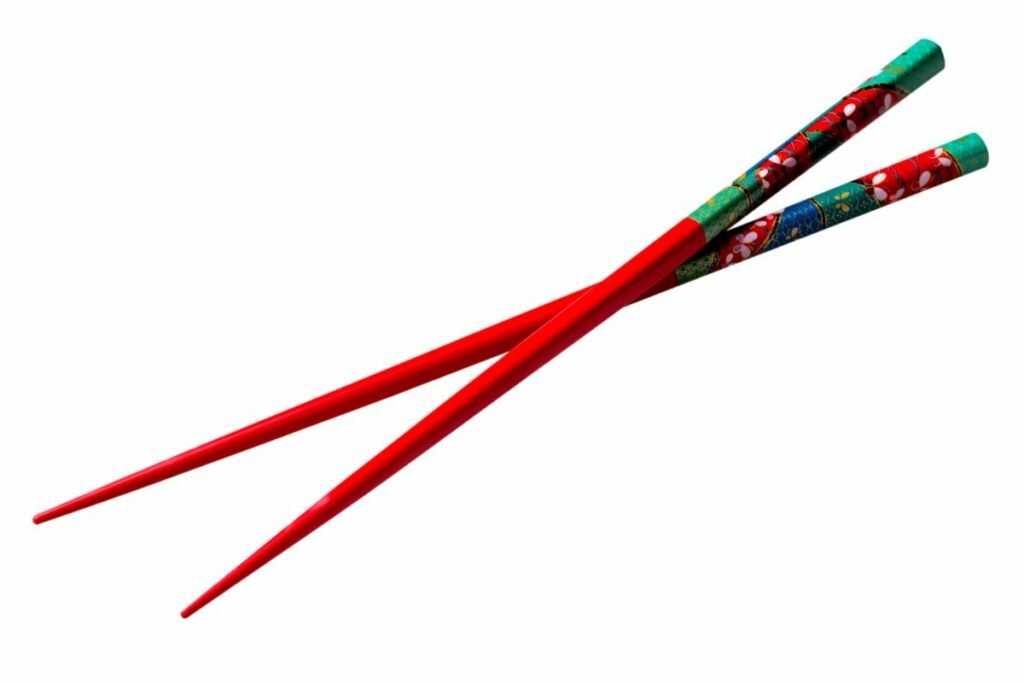
Washi is the Japanese art of hand making paper and these chopsticks are decorated with beautifully crafted washi paper of various designs.
Nishijin Chopsticks
Nishijin chopsticks are wrapped with woven fabric in intricate patterns and then covered with a food safe lacquer for protection. They are some of the most beautiful and decorative chopsticks.
Wakasa Chopsticks
Wakasa chopsticks are made from cherry wood and layers of lacquer which is rubbed down repeatedly and recoated. The decoration on the chopsticks is meant to represent the view of the ocean floor in Wakasa bay. So each pair of chopsticks is unique.
Final Thoughts
Now that you know the process that chopsticks go through, it may make you appreciate their history and origin a little more next time you’re using them.
We hope that this guide on how to make chopsticks has been informative and that you have learned something new and interesting from it.



